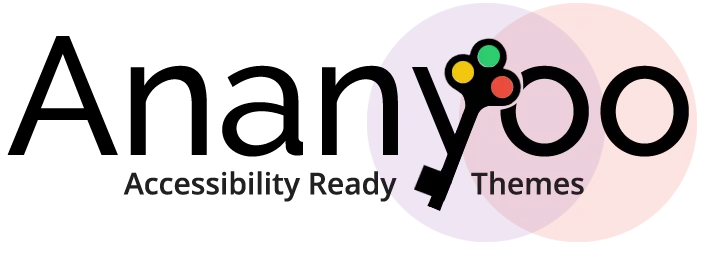
Apart from the United States, nearly twelve more countries have laws or policies which prevent disparate access to EIT/ ICT (European Institute of Innovation and Technology). Like the United States, they also form a part of a specific law or policy which is aimed at decreasing discernment against people with physical disabilities and not specific to only EIT. In some cases, the plans apply only to the government’s websites. It is rare for any country’s anti-discrimination legislation to particularly mention accessible EIT but instead mirror, in spirit, the ADA, the Rehabilitation Act, or both.
United Nations Convention on the Rights of Persons with Disabilities
The United Nations Convention has always been working on one of the critical aspects of human rights instruments – the rights of Persons with Disabilities. It is intended to protect the rights and dignity of persons with physical limitations and disabilities. Parties to the Convention are required to support, protect, promote and ensure the full enjoyment of human rights by persons with disabilities and assure that they hold full equality under the law.
The Convention indicates that persons with disabilities should be able to live independently and involve fully in all aspects of life. To this end, States Parties are also required to take suitable measures to ensure that persons with limitations have access to transportation, physical environment, information and communications, and other amenities and services open or provided to the public.
The UN General Assembly approved the text on December 13, 2006, and was opened for signature on March 30, 2007. It came into force on May 3, 2008, following the ratification by the 20th party. As of December 13, 2009, it has 143 signatories and 76 parties, and The Committee controls the Convention on the Rights of Persons with Disabilities.
The Committee on the Rights of Persons with Disabilities today stands as a body of human rights experts which is tasked with controlling the implementation of the Convention. It will initially consist of 12 self-sufficient human rights experts, with half elected for a two-year term and half elected for four years.
Article 33 explains that States are expected to set up their independent monitoring mechanism – which will eventually take the form of an autonomous national human rights institution.
The United States signed the Convention on the Rights of Persons with Disabilities (CRPD) at United Nations Headquarters on July 30, 2009 (It should be noted here that this has not been “ratified” by the US, as sanction must be advised and consented to by a two-thirds vote in the Senate.)
WCAG
The Web Content Accessibility Guidelines (WCAG) form a part of a series of Web accessibility guidelines issued by the W3C’s Web Accessibility Initiative. They consist of a set of instructions on making the content accessible. The first version of WCAG (Version 1.0) was published and became a W3C recommendation on May 5, 1999. Today, nearly all of the international policies and regulations refer to or incorporate the WCAG. The United States Section 508 web provisions (1194.22) harmonize with WCAG 1.0’s Priority 1 guidelines.
Fast Forward from 2008 to 2017: WCAG 2.1 and Silver
Now that we are in 2019, WCAG 2.0 from December 11, 2008, is still our measuring stick for accessibility. Digital and web technology have changed a lot in this last decade. So, there’s been a need and expectation to create a dot release of WCAG, a WCAG 2.1.
The WCAG 2.0 were so well-formatted and detailed in 2008 that it stood the test of time, given all the requirements are yet considered extremely valid. So, many experts are still hanging on to 2.0 and adding 2.1 to it will make it nothing but more elaborate. There’s a lateral effort to the WCAG 2.1 dot release. The 2.1 dot release will help to fill the known gaps. Also, there is another movement called Silver, which is the Accessibility Guidelines 3.0.
Public sector website accessibility statements – what one needs to know
Accessibility laws are getting popular amongst not just government websites but also for the non-government public sector website and apps; it most definitely will need to meet specific accessibility standards.
The Public Sector Bodies (inclusive of the websites and mobile Applications) Accessibility Regulations 2018, to give its full title, became valid on 23 September. The primary purpose of Accessibility Regulations is to ensure if that public sector websites and mobile apps are accessible to all users, particularly those with disabilities.
All new public sector websites now are required to answer accessibility standards and publish an accessibility statement.
This will make evident the level of accessibility across the website or the app. Where there are barriers, the notification will apprise users of alternative routes to access. The announcement will also enable users to contact the website owner if they identify any otherwise issues.
Any websites published since September this year will need a statement by September 2019, and the other older websites have until 2020 to comply with these guidelines.
WCAG Timeline
May 5, 1999: WCAG 1.0 was formed. It included 14 guidelines, varying depending on the need to provide text equivalents to considering simplicity and clarity on the web. Each direction had between one and ten supporting checkpoints.
December 11, 2008: WCAG 2.0 broadens the scope and offers its four principles. The early 2000s were years of when there were too many changes in technology, so WCAG emerged to keep up with the challenges. WCAG 2.0 was a fantastic follow-up to its forerunner and was intended to be applied to nearly all things digital (including documents and apps). WCAG 2.0 also opened the four guiding principles of accessibility, declaring content must be perceivable, operable, understandable, and robust, backed by achievement standards for adhering to those principles. WCAG 2.0 dominated as the gold model for a long time.
June 5, 2018: WCAG 2.1 establishes on but does not replace WCAG 2.0. The advanced version of WCAG is backwards-compatible with the earlier one, which means that if you comply with WCAG 2.1, you reflexively comply with WCAG 2.0. This became a piece of great news for website and app developers. WCAG 2.1 seemed to be a well-coveted update after the decade-old WCAG 2.0 could no longer account entirely for advancements in technology and web use. The new WCAG 2.1 standards comprise of several success criteria for improving web accessibility on mobile devices, as well as for individuals with low vision and cognitive disabilities.
Helping companies meet the new regulations for accessibility is just one part of the work of these guidelines. It aims to make sure there are no online or offline restrictions preventing otherwise-enabled people from accessing services they need to use.
Internationally, the Web Content Accessibility Guidelines is standard for using it as the basis for most Web Accessibility policies and regulations (for countries which have them). Many nations are currently working on revisions which will harmonize with WCAG 2.0.
